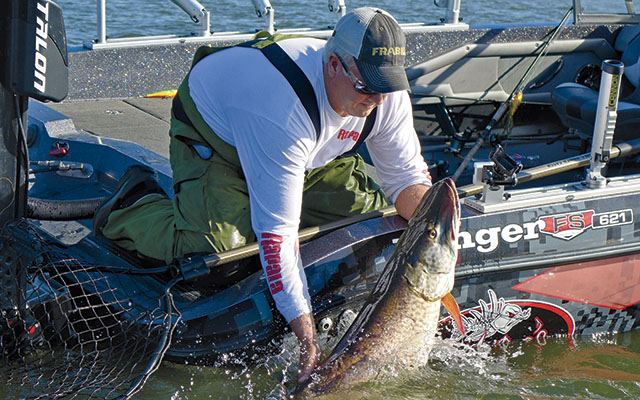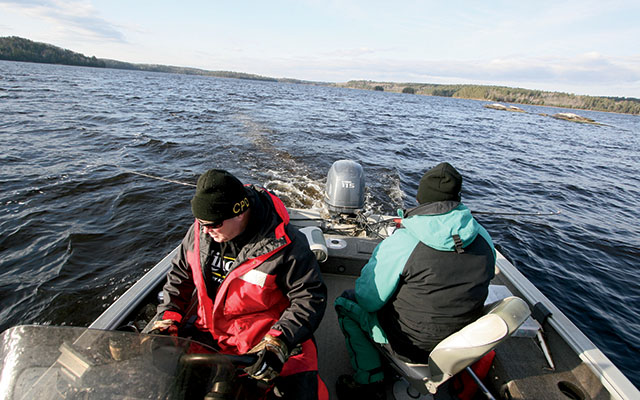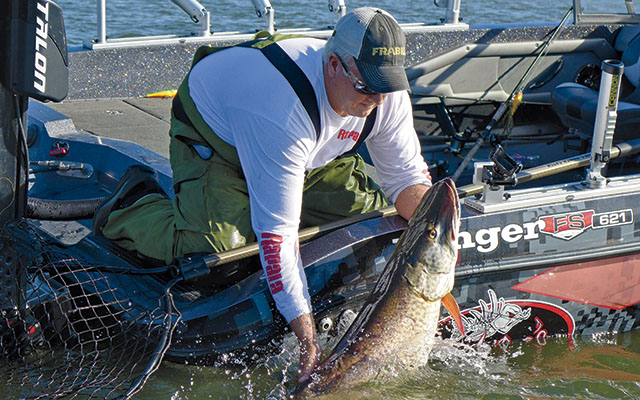
Muskie records are embroiled in controversy like no other fish. Most historical lists of the largest muskies ever caught are dominated by a handful of names such as Spray, Lawton, and Hartman. By some accounts, more than a third of the top-50 muskies of all time were registered by these individuals, primarily from the late 1930s to early 1960s. Most of those fish were claimed to be over 60 pounds, with Art Lawton, Louis Spray, and Robert Malo each claiming fish of nearly 70 pounds.
Uninitiated muskie anglers might conclude that this was the golden age for record muskies. In reality, many of these fish have since been discredited for various reasons, including not being caught legally (netted, blasted, or bought), being stuffed with water, sand, or metal objects to make them heavier, or being outright fabrications as to their claimed weights. There were even “death-bed” confessions acknowledging personal misdeeds. An attempt to sift through the sordid history of muskie records is beyond the scope here, but this brief reflection helps establish a more realistic measure of the likely top-end size of muskies. It further establishes reasonable expectations for today’s muskie anglers.
To my knowledge, only two legally-caught muskies weighed over 60 pounds in the last 50 years: Ken O’Brien’s Canadian record 65-pounder caught in 1985 and Martin Williamson’s 61-pounder caught in 2000. Even these fish are not without their detractors. However, these fish, along with credible catch-and-release fish, provide evidence as to the upper echelon of muskie growth potential.
Some of the more notable recent giants caught and released include Dale MacNair’s 57- X 33-incher (2008), David Polniak’s 60 X 29.5 guided by Capt. Rich Clarke (2011), Ed Barbosa’s 54.5 X 30.5 guided by Mike Lazarus (weighed 58.5 pounds prior to being released) (2012). Significant kept fish with verified weights topping 55 pounds include Jeff Gardner’s 59 X 27 weighing 55.4 pounds (2006), Ed Beers’ 59 X 28-inch 56-pounder guided by Capt. Bob Walters (2010), and the Michigan state record caught by Joe Seeberger weighing 58.5 pounds and measuring 59 X 26 inches (2012).
While no serious muskie angler would promote killing a trophy, the occasional mega fish that cannot be released despite all best efforts, or the rare fish kept to establish a new record, provides helpful evidence of the length and girth necessary to produce a muskie legitimately topping 50 pounds. Also, the cited fish were measured without extreme tail pinching or questionable girth measurements, which are seemingly more prevalent in recent years.
The moral of the story is that, even with today’s more protective regulations and better release practices, a true 50-pounder is a beast that doesn’t exist in most fisheries. Where they do, they’re in extremely low densities. Also, not every 55- to 57-inch muskie weighs 50 pounds. For those undaunted by the task, however, the following fisheries will keep you in the quest for a legitimate 50-pound-plus muskie.

The area consisting of eastern Lake Ontario and the St. Lawrence and Ottawa rivers is without question the region with the greatest probability of producing 50- to 60-pound muskies. It seemingly does so on an annual basis—often several times in the same year. This self-sustaining population of world-record-class muskies has undergone significant changes in the last decade, including a VHS epidemic that killed as much as half of its adult population from 2005 to 2008. This tragedy may have also benefited the fishery by reducing competition among the remaining stock and possibly strengthening the gene pool.
Captain Rich Clarke has over 35 years of experience fishing the Thousand Islands region for the biggest muskies on the planet. His accomplishments include guiding David Polniak to one of the largest released muskies of all time at 60.125 X 29.5 inches. At the time of the catch, Clarke was both confident that the fish wouldn’t challenge the 70-pound mark and that the fish was perfectly healthy for release. As such, Clarke and Polniak agreed without hesitation to release it, which Clarke estimated between 62 and 64 pounds.
“That fish didn’t show any signs of stress, and if she’s still alive today (six years later) she could best the all-tackle muskie record,” Clarke says. “Since that time I’ve personally caught a 58.75- X 27.5-incher and have seen two mega fish that appeared to surpass 60 inches. One chased in my lure while bass fishing and I got a good look at her length and girth. The second fish was while we were muskie fishing and again this fish turned away without biting. I know where they live and am out to catch a fish topping 60 inches with a girth better than 30. This time I’ll get a weight on that fish.
“A large girth is important to produce a record. The St. Lawrence River is full of forage—the latest of which are gobies that have now fueled 7-pound smallmouth bass, 12-pound walleyes, and possibly a new record muskie. Abundant forage is a double-edge sword, though. It grows muskies to incredible sizes but also makes them hesitant to chase a lure great distances. So even if I don’t catch one more record fish, I’ve had a great career and am fortunate to have caught more muskies topping 55 inches than most.”
Captain Marc Thorpe is a master at targeting muskies on 120 miles of the Ottawa River and over 160 miles of the St. Lawrence. He puts in the time both on and off the water studying fisheries and their fish. He’s constantly on the move, racking up miles on his truck and boat to put his clients on the best possible water. If he doesn’t like conditions at one spot, he moves without wasting time waiting for a bite. This philosophy pays off for his clients to the tune of an average of 6 to 9 muskies over 55 inches per year. His best year was 14 fish over 55 inches, with some 57 to 58 inches.
While he believes that multiple fisheries across North America have the…





